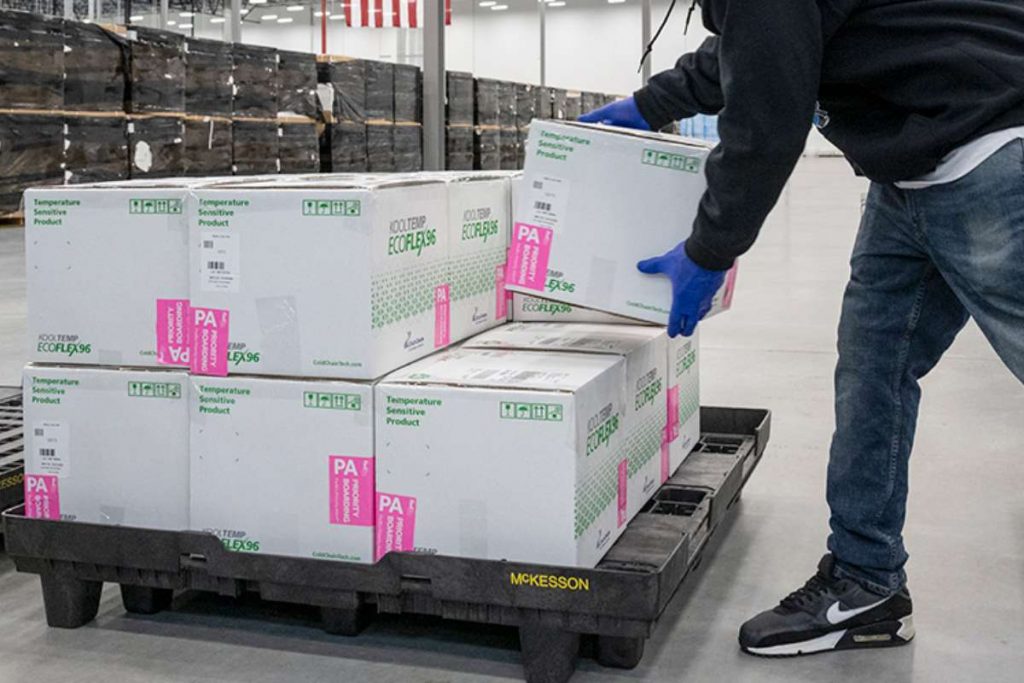How to Maintain a Cold Chain
Seventy percent of all the food eaten in the United States
Table of Contents
Choose the Right Packing Materials
The containers you choose to pack your perishable shipment can keep your goods cool or they can allow them to warm up dangerously. Pack your shipments carefully inside a polystyrene or styrofoam shipping cooler. You will need to pack a refrigerant like gel packs or dry ice around your perishable items before closing them up inside the styrofoam box. We’ll discuss refrigerants in more detail in the next section. Make sure you place your perishable contents in a waterproof container, unless it’s live seafood, in which case, you need to leave the wrapping open so the animals can continue breathing.
The thicker the sides of the insulated shipping box, the longer your contents will remain cold. You can place the insulated shipping box inside a regular cardboard box, with additional insulation stuffed around it to hold it in place – if the styrofoam box slides around inside your package, your shipping contents could sustain impact damage. Some companies use multiple layers of insulation to keep perishables cold – you could pack your outer cardboard box into an even bigger cardboard box with styrofoam panels or other insulation in between the two boxes. You can cover the outside of your shipping boxes or pallets with thermal blankets and pallet covers to keep the temperature inside the boxes consistently cool for longer.
Keep Things Cool Inside Your Shipment
You’ll need to choose a shipping refrigerant to keep your packaging contents cold during shipping. The most common cold chain technologies for keeping perishables frozen or cold include dry ice and gel packs, although you can also use cold plates, which are flat, plastic, freezable bottles containing liquid, and liquid nitrogen, which is usually only used to ship biological cargo.
If you’re packing with dry ice, avoid making your package airtight. Dry ice sublimates into carbon dioxide gas, rather than melting into water, like regular ice. The carbon dioxide gas needs to be able to escape
Gel packs are not made with hazardous material, so you don’t need to label the package. They’re good for shipping things that need to remain cold, but not frozen. Wrap your perishable contents with the gel packs inside the insulated shipping box, so that your perishables remain a consistent temperature throughout. Line the outer cardboard box with plastic and an absorbent pad to catch the water that will leak out of your gel packs as they thaw.
Move Your Perishables as Quickly as You Can
Refrigerants only last for a couple of days, even with the best insulation. Moving your perishables quickly ensures that they are still cold or frozen when they arrive. Choose the fastest shipping method possible. Avoid shipping over a weekend, when your perishables might sit idle somewhere for up to two days. Make sure your customers know that someone should be there to accept the package and put the contents in the freezer or fridge as soon as it arrives.
Maintaining a cold chain is essential to getting your perishable shipments to their destinations in good shape. Use the right cold chain technologies for your shipping needs, so your shipments stay good and your customers stay happy.

Review How to Maintain a Cold Chain. Cancel reply